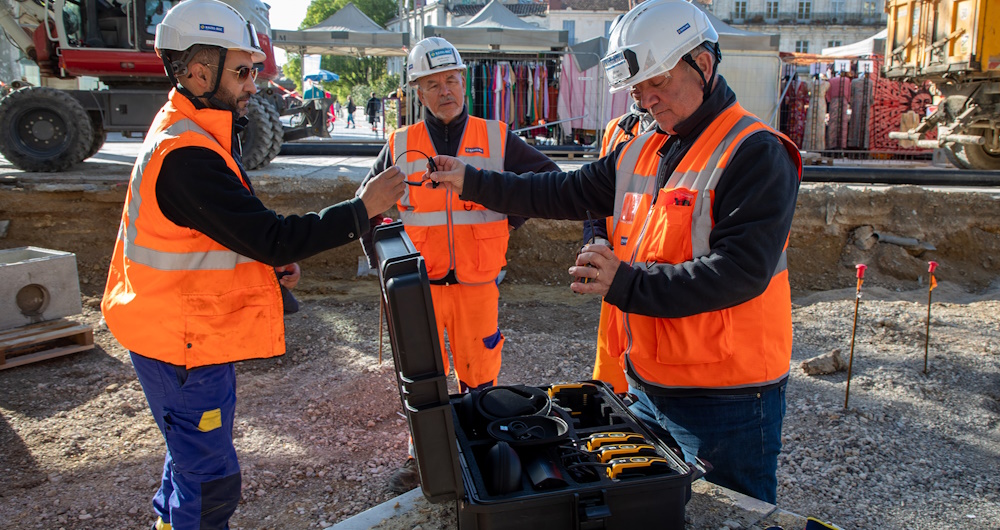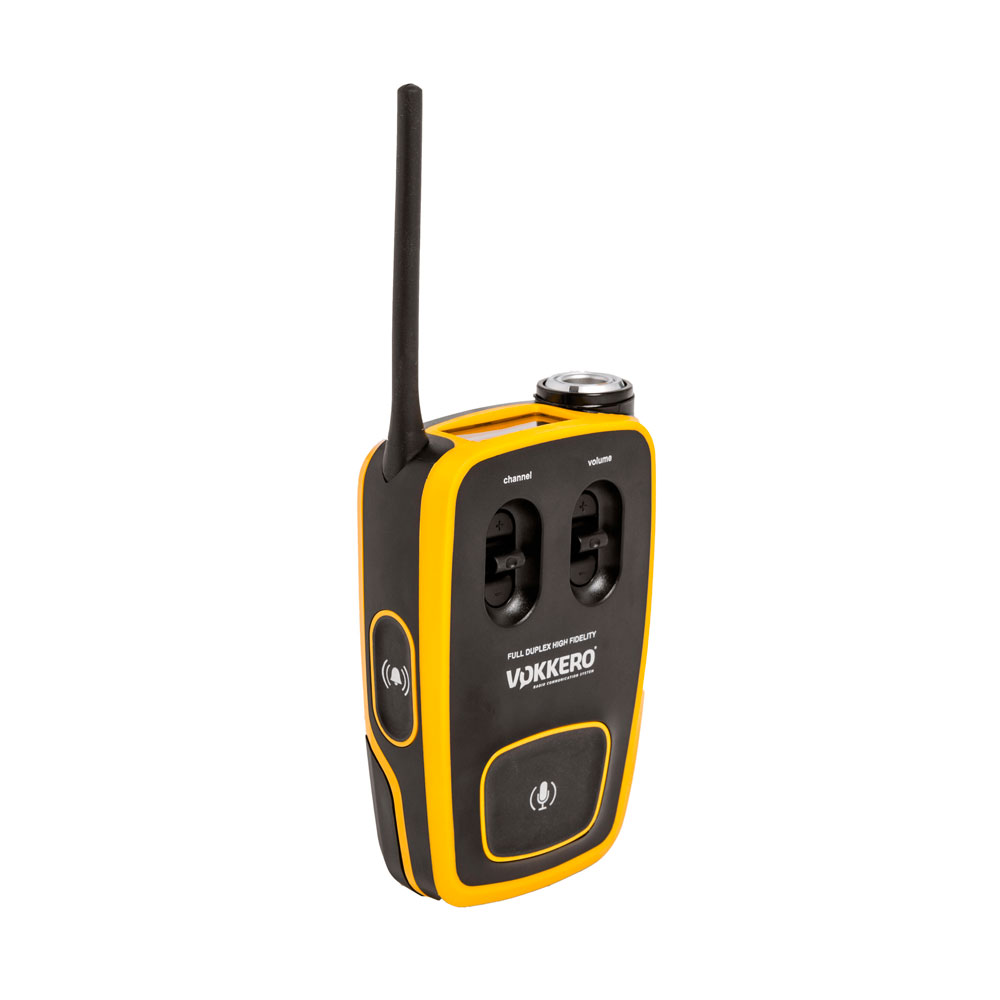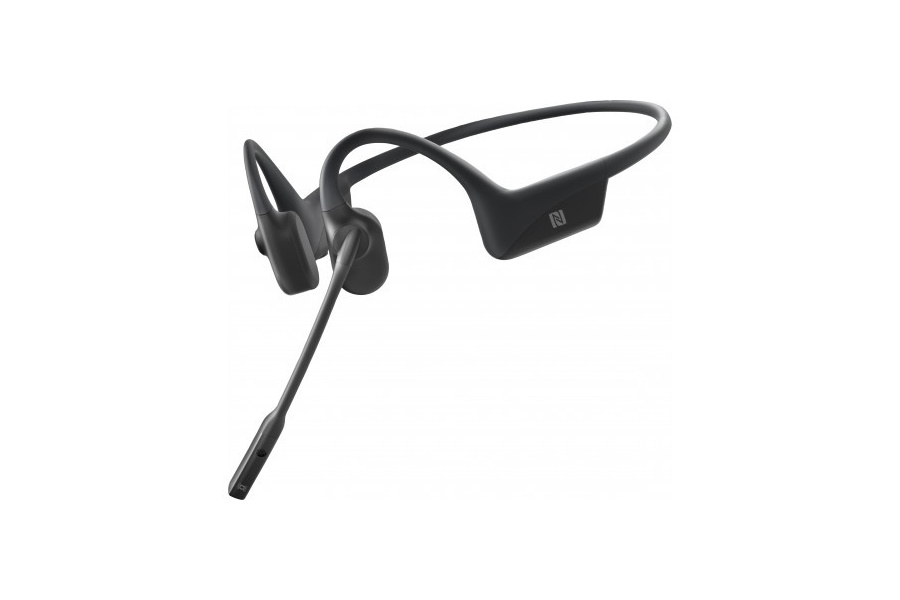The Razel-Bec story
Razel-Bec is the result of 140 years’ experience in public works, and symbolizes the union of two great families of contractors. Today, Razel-Bec builds the infrastructure essential to urbanization, mobility and energy production, helping to improve the quality of life for all.
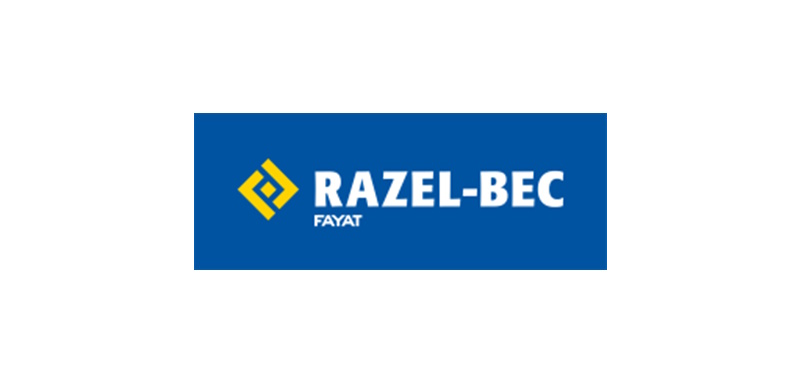
The brief
Deeply affected by an accident on a construction site, the Razel-Bec Languedoc branch decided to explore solutions to improve the safety of people working with machinery.
The deployed solution
The anti-collision systems tested are not convincing: a radar that reacts far too often without any real danger – up to 400 times a day!
Another solution was explored, that of the VOKKERO GUARDIAN full duplex radio system, already tested and approved by Coteg’s teams. The idea is to connect the team via “talkies” and bone-conduction headsets, in a continuous private network, without the need to press a button.
People speak naturally, just like in a meeting room, with ambient noise filtered out to retain only the vocal frequencies. The agency decides to invest.
Consultations and trials are launched with the support of FCAI (Fayat Construction Achats Investissements) for the purchase of the first 32 radios for 7 teams.
.


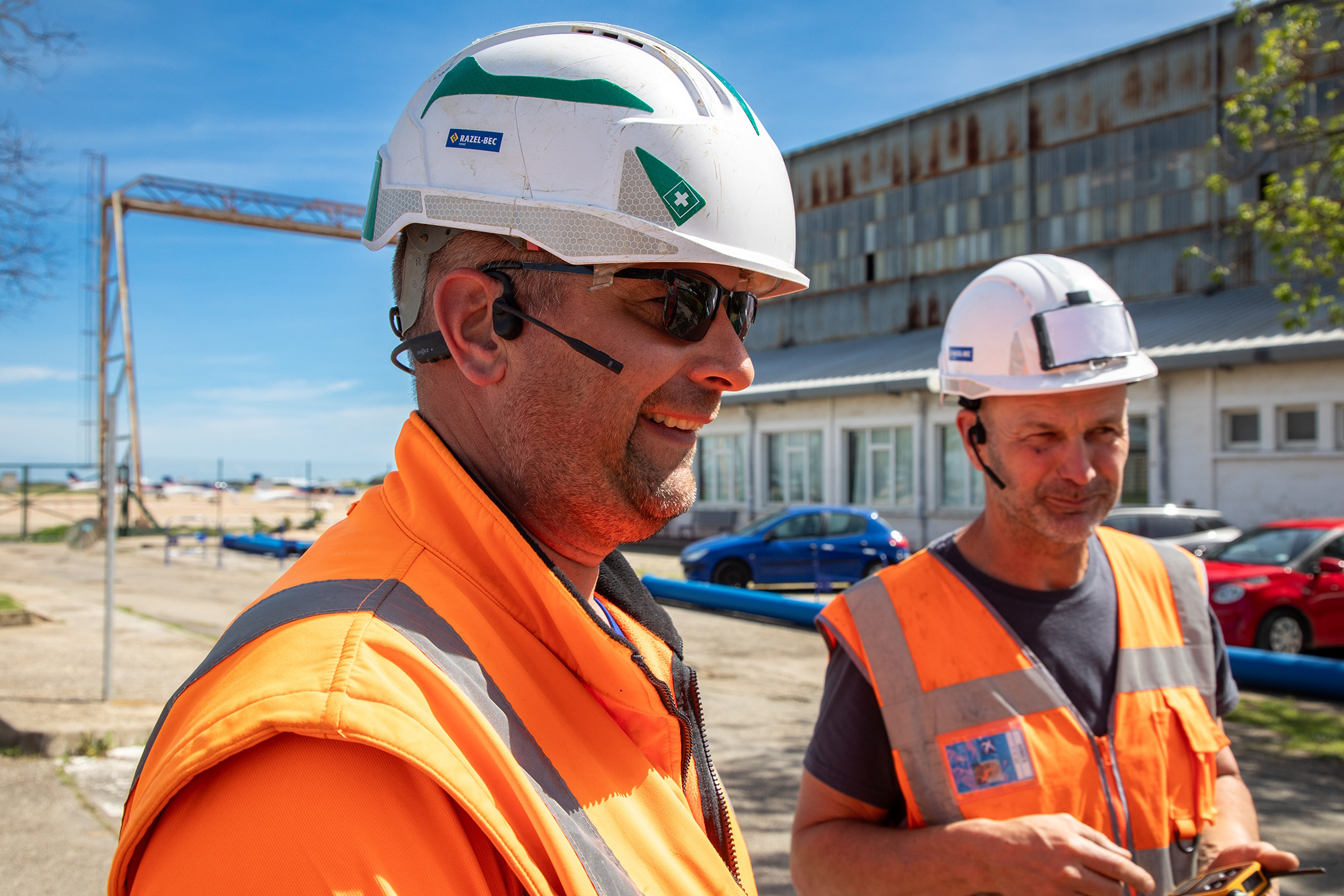
The result
Clear communication
Communication is spontaneously smoother and calmer, with everyone able to tell the others what they’re doing and where they are. Relationships are calmer as a result.
Enhanced safety
In addition to improving communication between the teams, the safety of people working on the machines has also been enhanced.
Productivity improvement
The icing on the cake is that, as well as improving safety through better communication, it saves time on linear worksites.

“It’s a new way of communicating that also has an impact on health. We even think that yields will improve on linear sites!
Thierry Louge,
After an initial 6 months’ feedback, the system should soon be extended to other teams… and perhaps other agencies.
Quality-Safety-Environment Manager
The solutions we use
Discover the solutions used in this case study

